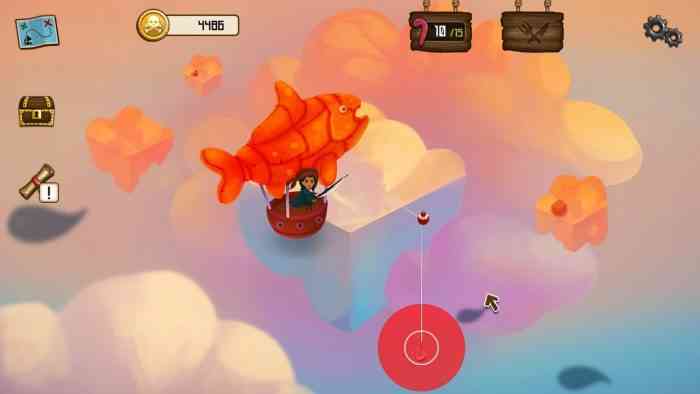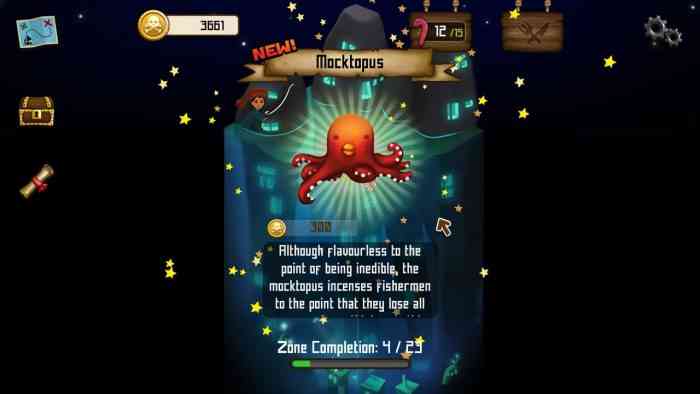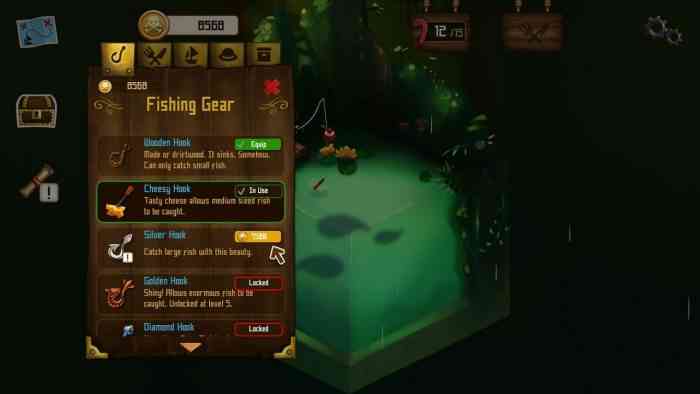Where’s Manilo At?
When it came to researching Rule with an Iron Fish, I shouldn’t have been surprised to find my Google-powered fact checks on the game would land me here. The game’s Vancouver-based studio, Kestrel Games, sought the help of Alaska Fisheries Science Center biologist, Dr. Jay Orr, to advise some of the new fishes in the Steam port of the hit mobile game. I can’t think of another game with ties to the National Oceanic and Atmospheric Administration.

The indie game is like a souped-up version of classic JRPG fishing minigames, but with a lovely isometric perspective, some QTE action, and fishy puns galore. When it launched for mobile last year, its concept was fresh in a sea of mobile game trend-chasing clones.
To learn more about this funky fishing game, I got to interview the studio over email about bringing the title to Steam and its development.
Could you briefly introduce yourselves, and the main hook for Rule with an Iron Fish?
We are the gestalt entity Team Kestrel! There are three-and-a-half of us, and we have
spent time working for triple-As and are now swanning around in the indie fishing hole.
We really just wanted to see how many puns reviewers could come up with. Like what
you did there…
The main hook looks like an unremarkable piece of bent iron, but it has a tender heart
under the rusty exterior. It knows that soon you’ll replace it with a silver hook, a golden
hook, a lemon battery hook. It holds back the tears, for it will rust.
In all seriousness, it’s a fishing game in the vein of old classic fishing games and
minigames from RPGs like Breath of Fire III, Legend of the River King and so on, but
with pirates.
How has the process been for porting the mobile game to Steam?
It’s a lot more work than it seems to port a game across platforms, as any developer who
has done this will concur. We’d been thinking about it for a while but weren’t sure if it
was viable as we’re such a small team and it meant taking time away from all our other
projects. Always a hard decision to make!
We had to reframe and redraw the environments to fit the landscape layout against the
original portrait layout while retaining that cube-world feel, which was challenging
because of massive aspect ratio differences. Making sure the UI felt natural and intuitive
required a lot of testing, refining, and bug-fixing. We’re lucky to have reliable and insanely
observant beta-testers. Also, we added controls to the Steam release for keyboard and
mouse and also support the tablet PC touchscreen and pen market, which is
burgeoning.
We also added more content (cat-related! And more fish) for the release, so that players
have something new to look forward to.
You’ve noted in previous interviews how charm was a focus when creating this game. How does your team discern what’s charming from cheesy or copy-and- paste cuteness?
We just aim to make the game feel like it’s a weird, magical place with quirky little
inhabitants. We’d like to expand that concept even more in upcoming projects. Part of
the charm of the game comes from the slightly off-kilter, otherworldly setting of the little
cube locations, and the other part of it stems from a bunch of deceptively cute
characters saying disgruntled, wry things.
We keep all our development in-house, so we’re able to keep our vision consistent.
Consistently weird.

You’ve used the isometric view for another game, what about that perspective that
draws your team to it?
The isometric view allows us to give the environment depth while retaining the hand-
drawn, nostalgic feel of a toybox. The charm of this perspective is presenting a viewpoint
of tiny self-contained worlds that don’t really exist in real life. This is something we’re
exploring in VR too.
Your game has puns galore and witty writing, as the studio’s first game with that
amount of dialogue, how did your team adapt to cover this aspect of game
development?
Thank you! Well, we certainly didn’t consider the translation cost of 25000+ words of
game dialogue and description text (pro-tip: it’s a lot).
We tested dialogue and quest flow over and over and over again. We mapped out
quests as a nodemap with SimpleMind and moved them around a lot so the quantity of
ongoing quests is always balanced. Since there are two main schools of players—those
who love flavor text and those who don’t like reading at all—we made sure you can skip
through text as fast as you want.
Lots of time went into trawling reference for weird, weird fish and concocting visual puns
like the pseudocarp and the piano tuna…
We also bothered Dr Orr, our fish-consultant, for suggestions. He’s a real researcher
who does very important things like name new species. There were a couple of really
rare ones that you can’t find pictures of on the Internet that he kindly sent us.
What are some of your team’s favorite fishing-type games or fishing mini-games and
why?
Ridiculous Fishing. The whole idea of shooting fish in midair is just so silly that it’s fun and the art style is outstanding.
Also, the classic games we mentioned earlier! A combination of silliness, visual appeal, and addictiveness that make these games and mini-games compulsive. That sense of ‘I
can’t believe that one got away…’
You’re a relatively young studio, but what are the sort of games Kestrel Games are
most interested in making?
We want to build things that we feel passionate about. We’ve been pretty obsessed with
living worlds. The next game we’re working on is a biome game which grows and
changes as you watch, where you’re on a mysterious expedition to collect and harvest
new plants and species. Of course, the local flora and fauna might not appreciate you
doing that… If you’re interested, sign up for our newsletter for rare previews and
updates!

As of a team of three, how does your team overcome fatigue with members
performing multiple roles?
We keep things fair by balancing the workload. If someone is busy in some capacity,
other members of the team will pick up tasks like bizdev-related things and so on. We’re
all pretty happy that we’re not cogs in the machine anymore, something that happens a
lot in triple-A studios. It’s great to be able to learn new things and a constant source of
inspiration.
Who’s the best fisher IRL in the team?
It’s our composer, who is actually person three-and- a-half! He’s been fishing up halibut
in the Pacific, off the shores of Haida Gwaii. Can’t beat that…
Rule with an Iron Fish is available now on Steam so turn on Ray Charles’ I’m Gonna Go Fishin’ and cast away for the next big catch with your mouse.